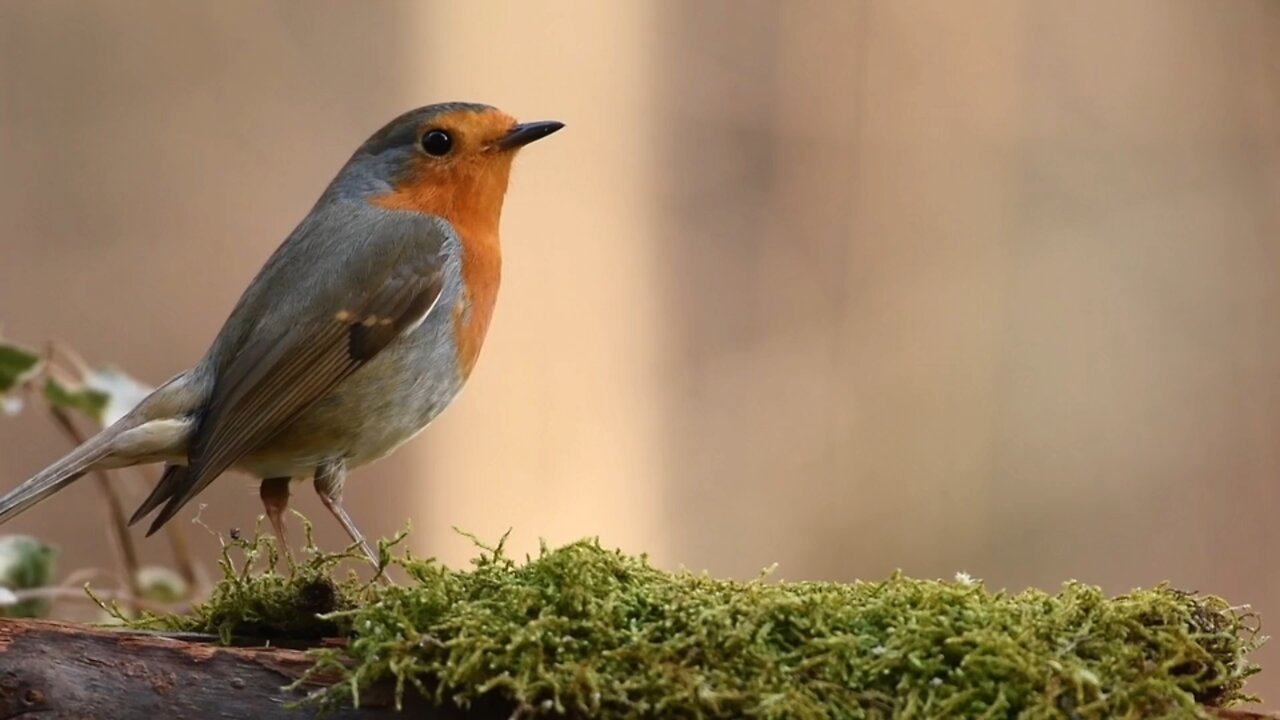Premium Only Content

"The European Robin: A Tale of Song and Survival"
The European robin (*Erithacus rubecula*) is a small, insectivorous songbird native to Europe, western Asia, and parts of North Africa. Known for its distinctive orange-red breast and face, the robin is a familiar and beloved bird across its range, often associated with winter and Christmas in European culture.
### Key Features:
- **Size**: The European robin is small, measuring about 12.5–14 cm (5–5.5 inches) in length, with a wingspan of 20–22 cm (8–9 inches).
- **Plumage**: Its most striking feature is the bright orange-red breast, extending up to the face and throat. The rest of the body is mainly brown with a white belly.
- **Song**: The robin's song is a sweet, warbling melody, which is often heard year-round but is particularly prominent in the spring and autumn.
### Behavior and Habitat:
- **Habitat**: Robins are highly adaptable and can be found in a variety of habitats, including woodlands, gardens, parks, and hedgerows. They are particularly fond of areas with dense undergrowth where they can forage for insects and worms.
- **Behavior**: European robins are territorial and can be quite aggressive towards intruders, especially during the breeding season. They are also known for their curious and bold nature, often approaching humans closely, especially when food is involved.
- **Diet**: Their diet primarily consists of insects, worms, spiders, and other invertebrates. In winter, they may also eat berries and seeds when insect prey is scarce.
### Cultural Significance:
- The European robin is a symbol of Christmas in many European countries, often featured on holiday cards and decorations.
- It has a strong presence in folklore and literature, frequently depicted as a friendly, helpful bird.
- The robin is the national bird of the United Kingdom.
### Breeding:
- Robins typically breed from April to June, with females laying 4-6 eggs per clutch. The nest is usually built in a hidden, sheltered location, such as a tree hole, wall crevice, or among dense vegetation.
- Both parents take part in feeding the chicks, which fledge around 14 days after hatching.
### Conservation:
- The European robin is currently listed as a species of Least Concern by the IUCN, meaning it is not at immediate risk of population decline. Its adaptability and widespread presence help ensure its survival across its range.
This bird's charming appearance and melodious song make it a favorite among birdwatchers and nature enthusiasts across Europe.
-
 LIVE
LIVE
Tundra Tactical
11 hours ago🛑LIVE AT 9PM CST!! Your Government Hates Your Guns : DOJ Holds Firm On National FIREARMS ACT
97 watching -
 LIVE
LIVE
DLDAfterDark
1 hour agoAre YOU The Guy That Ruins Thanksgiving?? - God Guns & Gear
149 watching -
 DVR
DVR
NewsTreason
3 hours agoDECLAS w/ Rambo & Dave: Nuremberg 2.0 | MTG Exits Stage Left | Mamdani Psyop Confirmed, 8pm EST
39.7K47 -
 LIVE
LIVE
meleegames
3 hours agoSONG REQUESTS CLOSED - Melee Music - Beat Hazard 3 - Devil Inside
122 watching -
 LIVE
LIVE
The Connect: With Johnny Mitchell
10 hours agoIs Garth Brooks A Serial Killer? Exposing The Dark Secrets Of Country Music's Biggest Star
228 watching -
 1:00:49
1:00:49
MattMorseTV
4 hours ago $0.40 earned🔴Massive VICTORY in the SUPREME COURT.🔴
97.4K118 -
 LIVE
LIVE
GritsGG
2 hours ago#1 Most Warzone Wins 4015+!
80 watching -
 4:20:08
4:20:08
Biscotti-B23
5 hours ago🔴 LIVE STREAM ENDS WHEN I GET 100 WINS 🥵 INVINCIBLE VS CLOSED ALPHA
10.2K3 -
 12:38
12:38
Timcast
1 day agoJasmine Crocket HUMILIATED By CNN To HER FACE Over Epstein LIE | Tim Pool
108K75 -
 19:32
19:32
MetatronHistory
23 hours agoWas Nazism Left Wing or Right Wing? An Answer From History
31.1K55